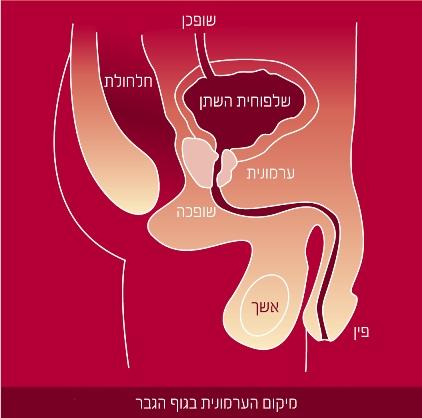The purpose of the experiment was to prove the programming for the ability of the "CellDetect" and to measure the technology's ability to diagnose, through differential staining of cells, the existence of bladder cancer cells. Also the stage of the disease, including the pre-cancerous stage

"Zetic Technologies", a subsidiary of "Bio-Light", reports the successful completion of a clinical trial for the detection and identification of cancer in bladder biopsies, using the CellDetect technology for the diagnosis and identification of cancer cells.
The purpose of the experiment was to prove the programming for the ability of the "CellDetect" and to measure the technology's ability to diagnose, through differential staining of cells, the existence of bladder cancer cells. Also the stage of the disease, including the pre-cancerous stage. All of this alongside morphological identification, compared to conventional H&E identification and diagnosis, that is, "Zetic's" method enables the identification of cancer cells also through a change in the color of these cells and also shows the characteristic morphological change of cancer cells, while the methods that exist today are based only on morphological change.
The experiment included 58 biopsy samples from the archives of the Rabin-Bilinson Medical Center, which were selected by an external party not related to the company. The samples included a group of non-cancerous biopsies (control group) and two groups of cancerous biopsies of bladder cancer at different degrees of severity of the disease. Histological surfaces were prepared for each case, where one of the surfaces was stained with CellDetect technology, while the other surface was stained with H&E staining, which is the currently accepted test for diagnosing bladder neck cancer. The diagnosis of the samples was carried out independently by two senior expert pathologists.
According to the results of the experiment, a full correlation was found (at a rate of 100%) between the diagnosis based on the "Zetic" technology and the diagnosis according to the H&E test, from the results of the two pathologists' examination. The diagnosis according to the "CellDetect" technology showed an excellent morphological detection ability, in addition On the identification based on the distinctive staining, which had a high correlation with the morphological characteristics.
In several cases, the presence of pre-cancerous cells in the control group was even suspected, which had not been detected before. In these cases, the company's technology shows a distinctive staining that supports the findings of these pre-cancerous cells, and even facilitates the identification of slight morphological changes that can indicate a suspicion of cancer at an early stage.
"Upon receiving these positive results, we intend to promote the development of diagnostic products for the diagnosis and detection of bladder cancer. We are very happy that we have successfully completed this important milestone, which demonstrates the company's ability to develop a simple and effective diagnostic tool, said Dr. Adi Alkals, CEO of "Zetic Technologies". "In the context of bladder cancer, the company's technology offers a new method for dual detection based on differential staining and morphology. In addition, the results of the experiment indicate that the differential staining has biological significance, a finding with potential significance for clinical evaluation." "Besides the positive results that have long been shown in the diagnosis and detection of cervical cancer, the trial results prove in a clinical setting the company's statements that the CellDetect technology has the ability to detect a wide range of cancer types, and complement our famous pre-clinical findings," adds Dr. Elkels.
The CellDetect technology uses a dual method of differential staining and morphological identification, to analyze cell samples, and differentiate between normal cells and pre-cancerous and cancerous cells.
Bladder cancer is one of the most common cancers in the world and the fifth most common in the US of all types of cancer, with over 70,000 new cases each year and over 14,000 deaths per year as a result of the disease. According to estimates, over 500,000 people in the US and over two million worldwide suffer from the disease, with the incidence being 4 times higher among men. If the disease is detected in its earliest stage, the chances of survival up to 5 years are over 90%, but the chance of survival after 5 years drops dramatically to less than 6%, if the disease is diagnosed in its advanced stage, and therefore the early diagnosis is important.
Dr. Ami Eyal, scientific director of "Zetic Technologies" and CEO of "Bio-Light" says that: "The ability of the CellDetect technology to detect cancer cells is extraordinary. The findings of the experiment indicate the range of applications that the technology has and open the door to expanding the development of diagnostic tools to diagnose other types of cancer. The results of the experiment indicate that our technology has the potential to develop innovative and effective products for the early diagnosis of bladder cancer at the same time as cervical cancer and other types of cancer."
"Zetic Technologies" is a subsidiary of "Bio-Lite", a management and holding company specializing in biomedical technologies. "Bio-Lite" is traded on the Tel Aviv Stock Exchange under the symbol TASE: BOLT.

4 תגובות
But the taking of the biopsy cells still needs to be initiated. And what reason is there to do it in a pre-cancerous stage when, as far as I understand, there are no symptoms yet?
By the way, June:
It can be concluded that these are different diseases also from the fact that it is written in the article that women also suffer from bladder cancer.
June:
SinceBladder Is not the prostate, After all, theBladder cancer Is not Prostate cancer
Is bladder cancer the same as prostate cancer or are they two different diseases??